Insights into Trekking Mount Kilimanjaro
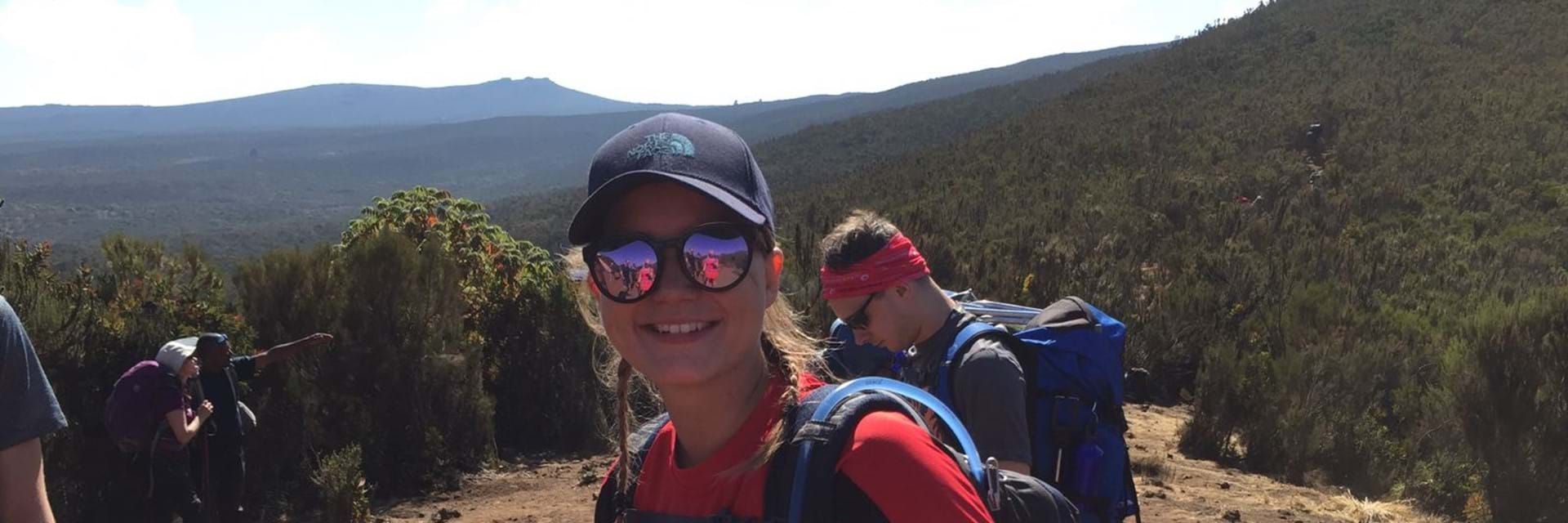
The wonderful Ellie Dolbear, who is part of our UK events team here at Dream Challenges, trekked Mount Kilimanjaro in September and we’ve made the most of our fab opportunity to ask her about her experience climbing to the roof of Africa. Here, Ellie gives us some awesome insight into the challenge and her top tips for people taking on our Mount Kilimanjaro Trek.
Why did you want to trek Kilimanjaro?
I wanted to take on the climb for my own personal achievement and for the amazing experience. I felt it was important to have a challenge that was physically and mentally demanding and I knew not only that climbing the mountain would be tough; but having to deal with the additional dimension of altitude was something I wanted to tackle. It gave me specific goals to work towards and a focus to train.
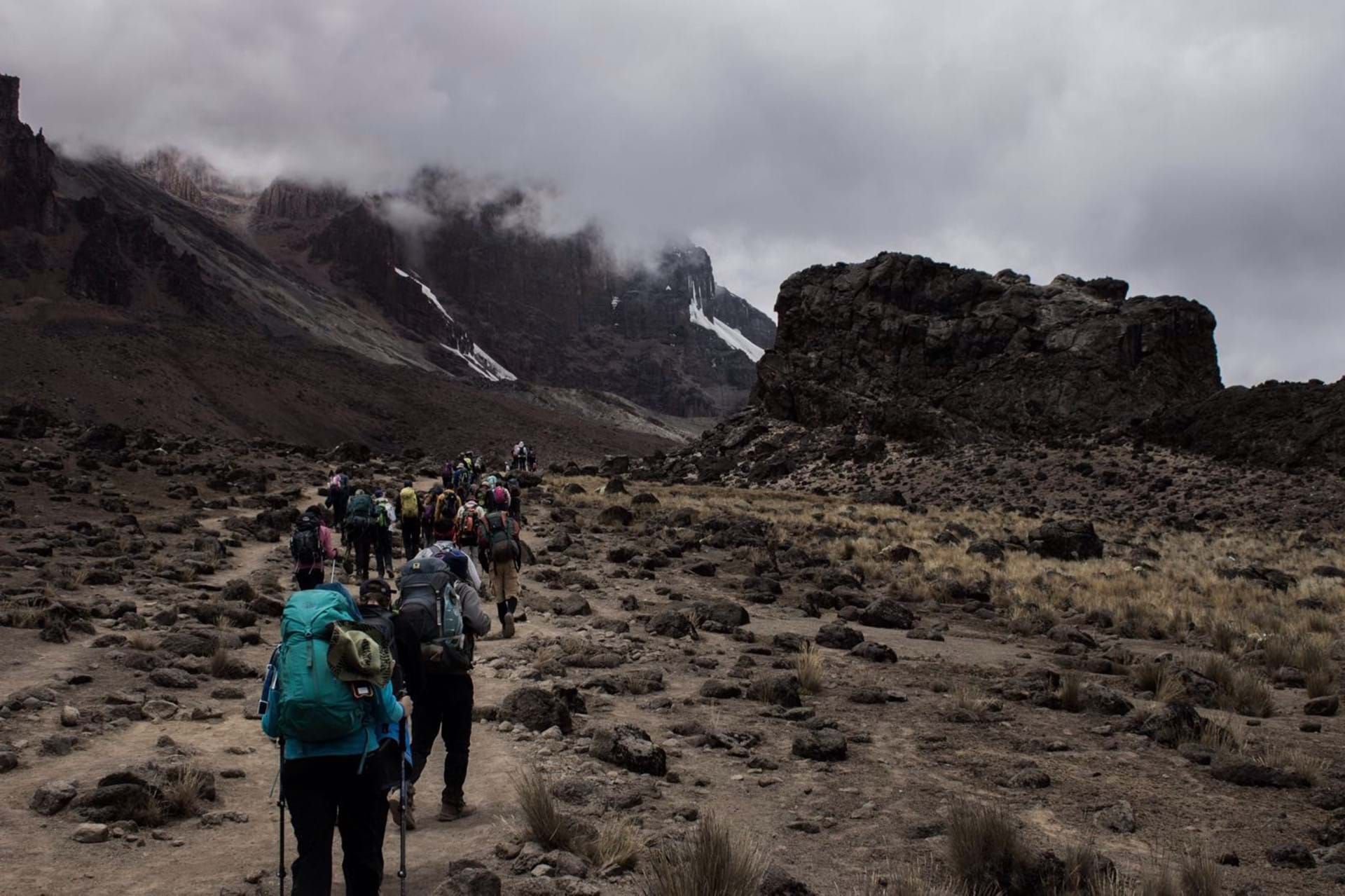
How did you train for the challenge?
I was fortunate enough to be working at The Altitude Centre in London at the time and therefore, I could train in their chamber, which was set at 2,700m (15% oxygen). I was also able to passively train at a higher altitude of 6,000m through intermittent hypoxic exposure.
Although I made the most of the opportunity to acclimatise, I also worked hard and trained at least two to three times a week. I did anything from high intensity interval training (HIIT) and circuits to event-specific sessions.
The HIIT sessions involved running or cycling with intervals of intense work and then moderate work or rest. This was to build the efficiency of the cardiovascular system to cope with the physiological demand of trekking at altitude.
The circuits would include full body exercises to prevent injury and build strength in my muscles to ensure they could withstand the demand placed on them whilst trekking.
I made sure I incorporated some event-specific training and did some walking on steep inclines within my training- this can be done in your walking gear, with a rucksack and weights to make it more challenging.
I would say the key to training is to ensure your fitness increases and the time it takes you to recover decreases. The quicker you can recover, the better chance you’ll have of summiting, as your body will cope better with the demands.
Had you done any mountain treks like this before you took on Kilimanjaro?
None at all!
How did you cope with the altitude?
I coped OK with the altitude, but the last couple of days were tough. I wasn’t ever sick, but didn’t have much of an appetite towards the end. It does affect your breathing; it’s a weird feeling, you can be walking so slowly but struggle to catch your breath. Some in the group suffered more – if you can acclimatise prior to the event, I would! Another symptom of AMS (acute mountain sickness) is constipation and diarrhoea – I’d prepare and make sure you take Imodium with you.
What are your top ten tips for challengers taking on the Mount Kilimanjaro Trek?
1. It’s important to stay as warm as you can to reserve energy. It does get cold, so prepare and wrap up, make sure you take off and put on layers depending on your temperature to avoid getting too hot and then cold sweats later.
2. Take chemical hand warmers – you can use these to put down your top or even in sleeping bag to warm it up!
3. Even though it’s cold, you MUST wear sun cream (preferably factor 50) especially for your face and lips.
4. Take high quality sunglasses that wrap around your face.
5. You must aim to drink 3-4 litres of water a day and add electrolytes if possible. Take a CamelBak – this is much easier and will encourage you to drink more water little and often.
6. Breathe in and out through your nose to avoid getting a dry mouth.
7. Avoid sleeping pills
8. You may lose your appetite, but its important to eat little and often. As horrible as it sounds, you must force yourself to consume some food.
9. Avoid over exertion – take your time and walk slowly
10. Definitely take walking poles – especially for coming downhill, they will save your knees!
The best bit of advice I can give is to control what you can control. You can’t control the level of altitude, but if you can conserve energy by doing the above and looking after yourself you will be more likely to summit.
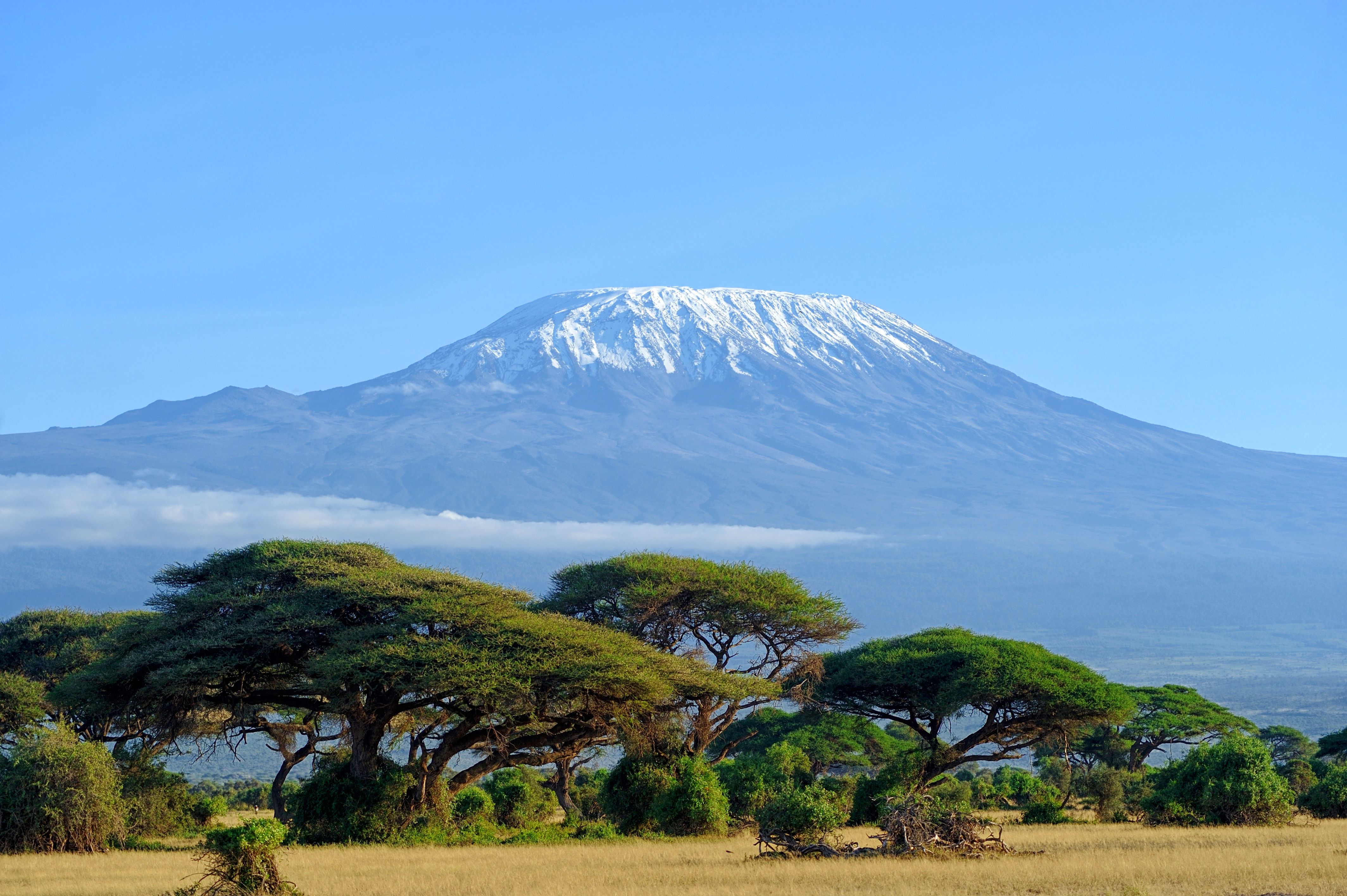
What was the food like?
The food is very basic with lots of carbohydrates and protein. Things like rice and pasta, some fruit too. It wasn’t amazing, but considering you are 4,000m or more above sea level, I think it’s pretty good.
What was camping on the mountain like?
Camping was fine, all the areas are big with toilet facilities available (not very pleasant, but OK). A down sleeping bag is important to keep you warm at night, as it does get chilly. My sleep wasn’t interrupted as I was tired from all the trekking, but I know some people did struggle – it’s important to rest when you can!
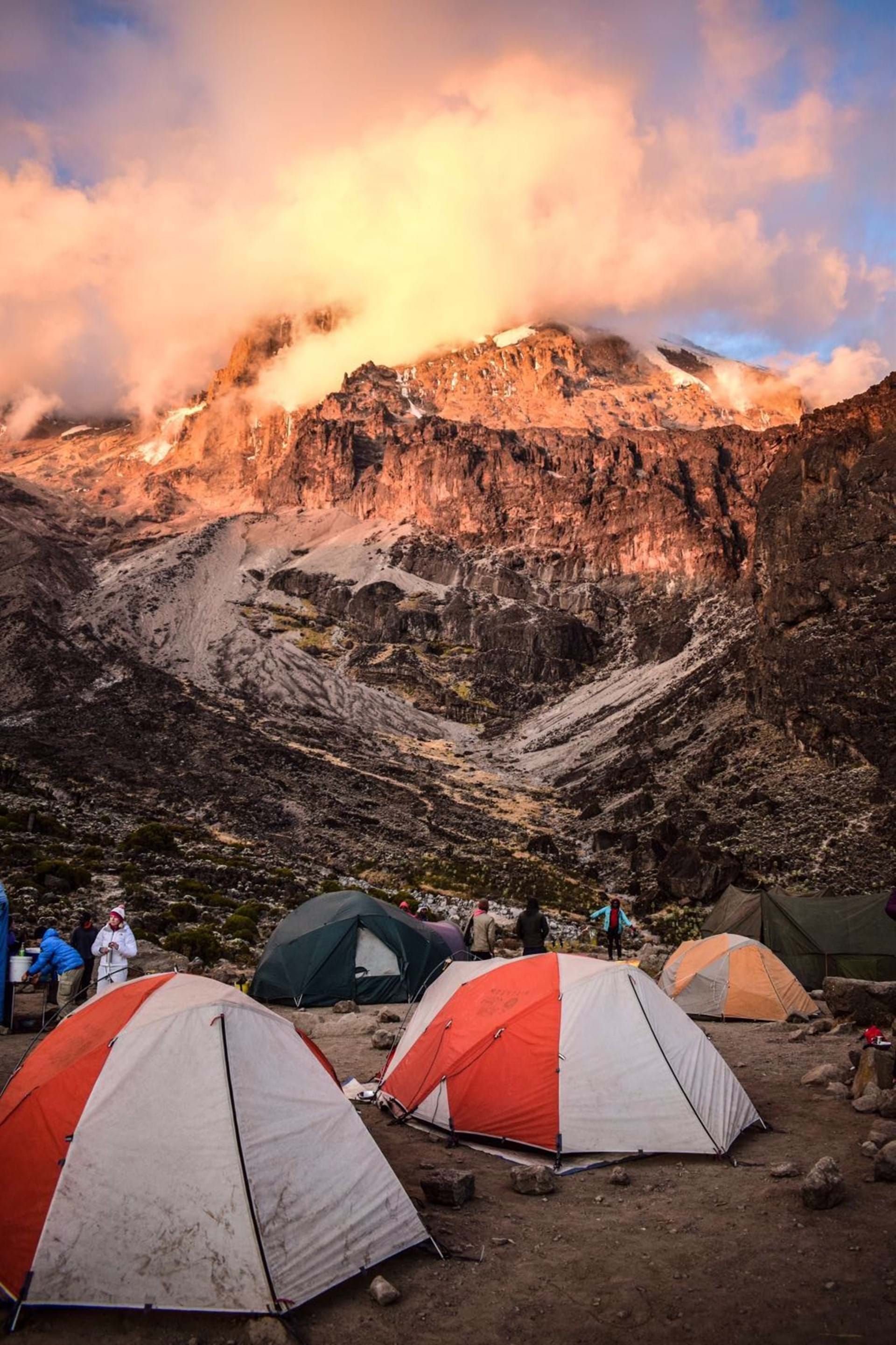
Was it cold?
It depends on the time of year you go as it will vary slightly. I went in September and the first few days of trekking were pretty hot, I was in shorts and a t-shirt. As you climb higher, it gets colder. The last few days were very cold and it’s important you prepare and take suitable clothing. At the top, everything begins to freeze, so make sure you take snacks that are unable to freeze and tuck in your CamelBak tube under your coat.
What was the hardest part of the challenge?
I have to say; the hardest part was the night we summitted. We woke up in the middle of the night to ensure we made the last leg of the climb up to Uhuru Peak for sunrise. The altitude had started to take effect and it was pretty cold, but the determination to get there for sunrise kept me going and it was definitely worth the hard work!
What were your top highlights of trekking Mount Kilimanjaro?
There are so many amazing moments during this trip, but these are my top five:
- Obviously, one of the best moments was reaching the summit, Uhuru peak, at sunrise – the sense of achievement is amazing!
- The whole experience is made by the friends you make within your group. I loved pulling together as a group and encouraging one another – it was a huge part of my trip.
- Sleeping above the clouds was also a highlight of mine. Waking up in the morning, climbing out of your tent and looking at the most incredible views.
- Climbing over the Barranco Wall – because we had to climb this bit rather than walk it, it engaged my brain a bit more and the views were awesome from the top!
- The local mountain guides singing – our team of Tanzanian mountain guides would sing throughout the trek on breaks and even while walking. It really helped us to keep up our energy and momentum throughout the challenge and it just made it more fun. Watch my video of them below to see what I mean!
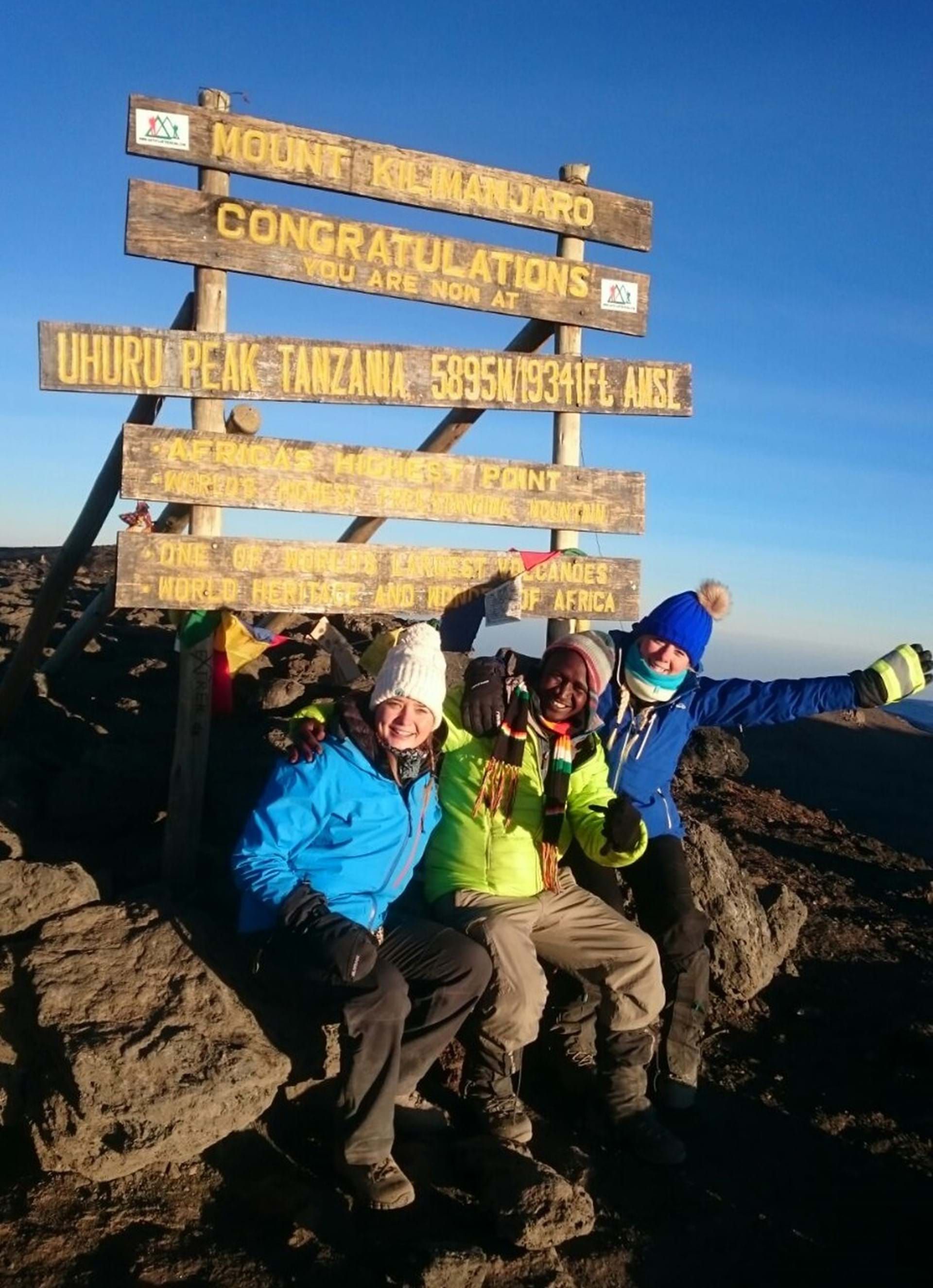
Want to take on the challenge of trekking the tallest free-standing mountain yourself? Join us for our next trek up Mount Kilimanjaro and reach “the roof of Africa” via the Northern Circuit, with Dream Challenges. With ample support, including a team of experienced challenge leaders, porters and two doctors, we’ve had a 100% success rate for our last five climbs up this mountain and we’d love to prove that you KiliCANjaro with us!
Trek Challenges
Get the Dream Challenges email newsletters
Be the first to know when we launch exciting new challenges and hear more about each of the awesome adventures you can join and sign up to our mailing list!
We’ll send you all sorts of fun stuff, including interviews with our local agents, top tips, case studies, videos and more – view our privacy policy for details.


